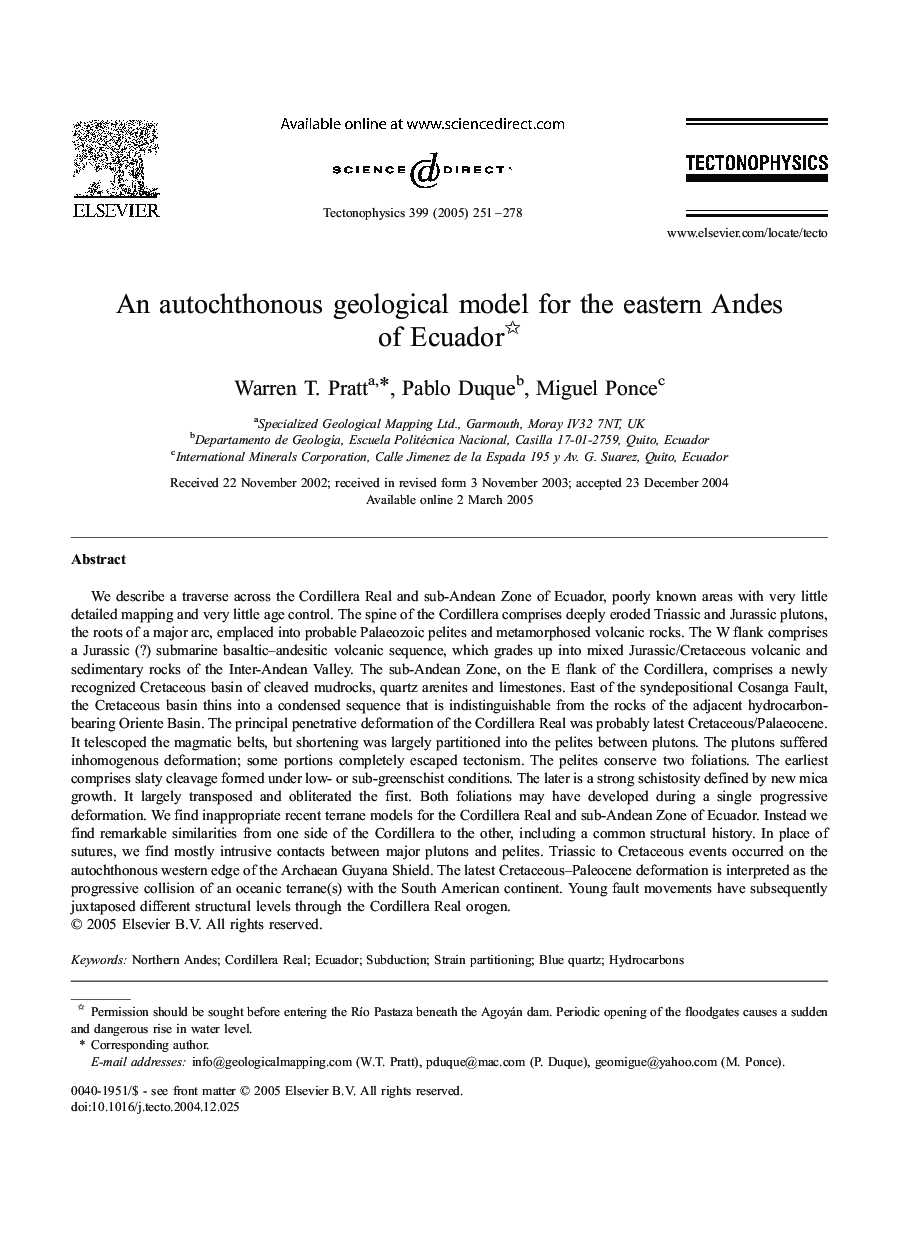| Article ID | Journal | Published Year | Pages | File Type |
|---|---|---|---|---|
| 9527068 | Tectonophysics | 2005 | 28 Pages |
Abstract
We describe a traverse across the Cordillera Real and sub-Andean Zone of Ecuador, poorly known areas with very little detailed mapping and very little age control. The spine of the Cordillera comprises deeply eroded Triassic and Jurassic plutons, the roots of a major arc, emplaced into probable Palaeozoic pelites and metamorphosed volcanic rocks. The W flank comprises a Jurassic (?) submarine basaltic-andesitic volcanic sequence, which grades up into mixed Jurassic/Cretaceous volcanic and sedimentary rocks of the Inter-Andean Valley. The sub-Andean Zone, on the E flank of the Cordillera, comprises a newly recognized Cretaceous basin of cleaved mudrocks, quartz arenites and limestones. East of the syndepositional Cosanga Fault, the Cretaceous basin thins into a condensed sequence that is indistinguishable from the rocks of the adjacent hydrocarbon-bearing Oriente Basin. The principal penetrative deformation of the Cordillera Real was probably latest Cretaceous/Palaeocene. It telescoped the magmatic belts, but shortening was largely partitioned into the pelites between plutons. The plutons suffered inhomogenous deformation; some portions completely escaped tectonism. The pelites conserve two foliations. The earliest comprises slaty cleavage formed under low- or sub-greenschist conditions. The later is a strong schistosity defined by new mica growth. It largely transposed and obliterated the first. Both foliations may have developed during a single progressive deformation. We find inappropriate recent terrane models for the Cordillera Real and sub-Andean Zone of Ecuador. Instead we find remarkable similarities from one side of the Cordillera to the other, including a common structural history. In place of sutures, we find mostly intrusive contacts between major plutons and pelites. Triassic to Cretaceous events occurred on the autochthonous western edge of the Archaean Guyana Shield. The latest Cretaceous-Paleocene deformation is interpreted as the progressive collision of an oceanic terrane(s) with the South American continent. Young fault movements have subsequently juxtaposed different structural levels through the Cordillera Real orogen.
Related Topics
Physical Sciences and Engineering
Earth and Planetary Sciences
Earth-Surface Processes
Authors
Warren T. Pratt, Pablo Duque, Miguel Ponce,
